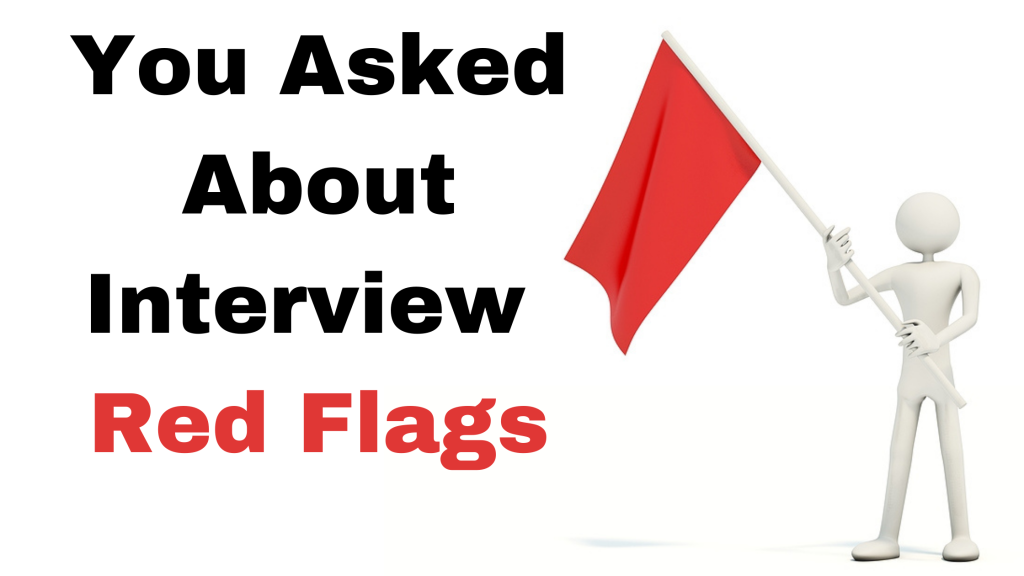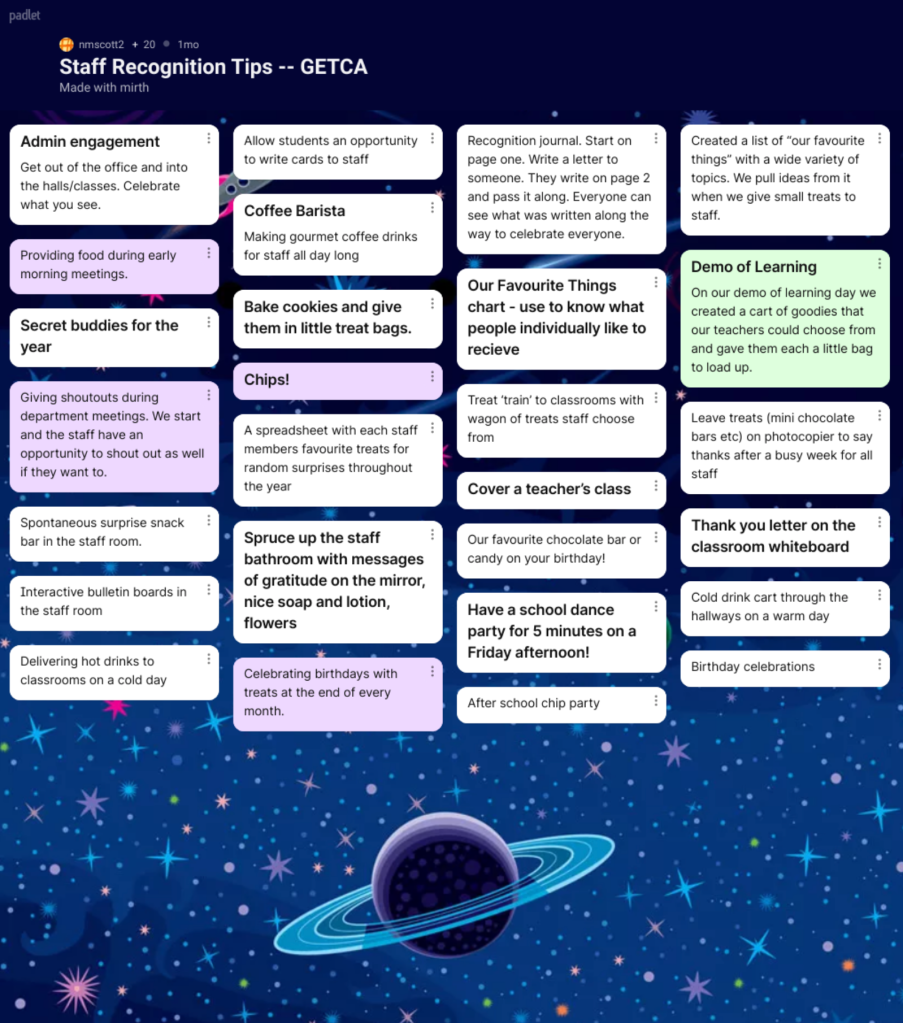Those who participate in my staff recognition programs always amaze me. They are so creative in the ways they find to recognize staff.
This was evident during programs titled 97 Staff Recognition Tips in Just Minutes and Crowdsourcing Staff Recognition that I presented at conventions earlier this year.
With the exception of session for the Awards and Personalization Association Expo, held in Las Vegas in February, the events were all online. The challenge of sharing tips in a virtual world was overcome by using virtual bulletin boards on the padlet.com platform. Participants posted their thoughts about staff recognition with descriptions of how they recognize or plan to recognize their staff and colleagues.
After reviewing what they posted, I realized that publishing these posts would create an opportunity for Briefly Noted readers to learn from others in leadership and non-leadership roles who share your commitment to using staff recognition to engage and retain the right people.
For this article, I’ve combined and categorized tips that are similar. There are also links
to previous blog posts that relate to the ideas contributed by convention attendees.
As you read the input of program participants, keep the 4As of staff recognition in mind. “Adopt” the ideas that resonate with you. “Adapt” others to fit your workplace and “Avoid” those which aren’t right for you, your staff or your workplace culture. Finally, consider whether some of these techniques could replace your current practices that should be “Abandoned” because they no longer work as they once did.
Because participants shared so many staff recognition tips, there will be a second article with more tips from program participants in a week or so.
Serious, But Still Fun
Recognition is important and should be taken seriously, but that doesn’t mean it can’t also be delivered in fun ways. Some people enjoy silly, playful awards that depend on puns that make you laugh or groan.
- A tea bag with a label on a ribbon: “You suit me to a T.”
- Mento candies: “You ment-o so much to us.”
- Notes to brighten their days (e.g. card with eggs that say, “Have an egg-cellent day.”)
- Excel gum with the message, “We have an Excel-lent staff!” or “You Excel!” (with a note to recognize their great work).
- Golden Apple awards. Recognizing each staff members for positive contributions.
- Staff morale bingo
- Bag of popcorn: “This may sound corny, but we just wanted to pop by and say thank you.
- A soft drink: “You’re soda delightful.”
- “Butter you up, Buttercup” bulletin board in the staffroom. Staff also receive peanut butter cups when recognized.
- At the end of the year, ask teachers to share their funniest/most embarrassing teacher memories of the year. These stories lead to a good laugh and make everyone realize they’re not alone in their mistakes/failures.
- Have a five-minute dance party on a Friday afternoon
Making Recognition Personal
Several participants described how they prepared to recognize staff in Appropriate ways by first learning about staff members’ non-work activities, interests, goals and recognition preferences.
- Ask people at the beginning of the year how they like to be recognized (publicly or in private).
- Create a list of “our favourite things” with a wide range of topics. We pull ideas from it when we give small treats to staff.
- A spreadsheet with each staff member’s favourite treats for random surprises during the year.
- A form with “a few of my favourite things” for staff to complete so they can tell you what they actually like and how they like to receive recognition (public, private or no preference).
- Love file—questionnaire for people to fill out so when you want to recognize someone you know their favourite things.
- Ask staff what fills their bucket. We all need/feel love in different ways, so ask. And then, act!
- A getting-to-know-you sheet to learn how staff like to be recognized, as well as treats they like. On the first day of school, surprise them with their favourite treats and continue to surprise them throughout the year.
Related article: 7 Questions to Ask to Recognize Staff Appropriately
“SP” Programs
Besides providing information that frontline leaders can use to personalize recognition, the answers to getting-to-know-you questionnaires can be a starting point for SP (secret pal, special person) programs. The virtual bulletin boards included several suggestions for implementing SP team building and peer recognition programs.
- Secret messages/deliveries. Leave a brief note or treat in their room before they arrive.
- We have wellness buddies at our school. Much like the secret peer recognition. This gives us an opportunity to acknowledge one another throughout the year.
- Seasonal “secret pals”—change up for the season: Secret Santa, Secret Cupid, Secret Bunny.
- We do Secret Pal for those who want to. It’s my favourite thing to be able to buy a small treat for someone. Especially after a hard week.
- Have staff hand in “about me” sheets, then have everyone draw the name of someone to recognize anonymously. Sort of a Secret Santa but can occur any time during the year.
Variations on Pass-Along Awards
In their posts, participants identified different ways to implement pass-along awards to encourage peer recognition.
- Recognition Journal—Start on page one. Write a letter to someone. They write on page 2 and pass it along. Everyone can see what was written along the way to celebrate everyone.
- Challenge Coin—A symbol that represents your workplace to pass around with a special note. Once received, the coin is passed to the next person that the current holder feels is deserving.
- Tim Hortons gift card—not so much about recognition, but more for staff morale and connectivity. The (school) administrator started with one $10 gift card. The card had to be passed on to anyone who came up to you and gave you a high-5. If someone high-5ed you and you had the Tim’s card you had to give it to that person. If you didn’t have the Tim’s card, all they got was a high-5 from you. Another rule was that once you passed the card on to the person who high-5ed you, you could not high-5 them back immediately (you had to be one person removed). The game ended at the last bell of the day and the name of the person who ended up with the gift card was announced to the staff.
- Engagement Pig—Pass around the stuffed animal and have staff give it to others with a note. Have them pass it once a week.
- “You Rock” rocks—We have treasured and artistic rocks that colleagues can use to honour the work of others. Staff were put in groups at the beginning of the year and decorated/painted a rock. The rocks are now passed among staff members to recognize times when “You Rocked!” The rock sits on your desk for a few days and then is passed on.
- We have five trophies that we present to staff each week. If you receive it one week, you present it to someone else the next week.
- Weekly hero awards.
Recognition on Display
From low-tech to high-tech, participants find ways to publicly highlight ways staff contribute and achieve.
- We have a TV in the main room at school for announcements. We could include thank-yous with the announcements.
- Staff shout-out bulletin board/wall
- Post notes on the staff room board
- Thank-you letter on the classroom whiteboard
- Interactive bulletin board in the staff room
- Words of affirmation in the staff room board dedicated to staff
- Whiteboard space in staff room to write appreciation
- Thank-you wall in the staff room for anyone to add to
- Post-it thank-you board in staff room
- Our school has a Google slide set up last year with one staff member bitmoji on each slide. Every staff member commented on/praised every other staff member in the school by writing on the slides. It was a nice pick-me-up in the middle of the pandemic.
Peer Recognition
Participants described ways in which they are unleashing the power of peer recognition in their workplaces.
- Peer recognition gratitude board
- Monthly Google form for staff to nominate each other for a prize. Includes an explanation of why the person is nominated.
- Above and Beyond Awards—Nominated by peers for going above and beyond to help a fellow staff member or customer. Used to be awarded at Christmas dinner but after today we’re going to do on a regular basis
- Monthly themed peer recognition cards printed and cut out and put on the staff room table
- Staff can nominate peers by putting their names in a draw. Once a month we draw a name for the monthly prize, but we post all the kudos on a recognition board in the staff room.



